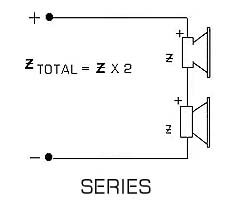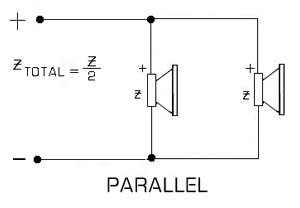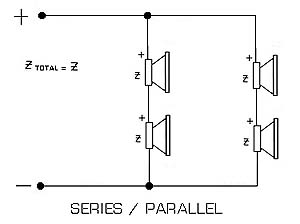Wiring up Speaker Cabinets
Wiring up Cabinets ( Impdance )
In multi-way systems with several speakers in a cabinet using a passive cross-over, it's important that each seperate section/bandwidth....Bass, Mid, treble, should present the same impedance.
For example.....In a system of 8 OHMS total impedance, it is important that each section, Bass - Mid - Treble, should individualy have an impedance of 8 OHMS.
So, if each or any individual section has more than one speaker unit, then they must be wired to present 8 OHMS...........so, for example, if you had an 8 OHM per channel amp, delivering to a cabinet with 1 bass speaker, and 2 mid speakers, and a treble speaker with a passive cross-over, then the midrange speakers need to be 4 OHMS each and should be wired in series, creating a total together of 8 OHMS........
The exception to this rule is with Tweeters operating at above 3kHz.......At frequencies above 3 kHz, the treble units can present a Higher, but NEVER Lower impedance than the other sections......
The effect of a higher Treble impedance, is a Decrease in sound output level, but an Increase in power handling capability, proportional to the mis-match ratio........
So, if a 16 OHM Tweeter is fitted in an 8 OHM system, the power handling capability of the Treble Section would be increased by a factor of 2


For combined Series / Parallel, calculate the impedance of each cluster of speakers, and treat that as if it were a single speaker with a single impedence. Then calculate the total combined impedance using this formulae:
Z = IMPEDANCE IN OHMS



